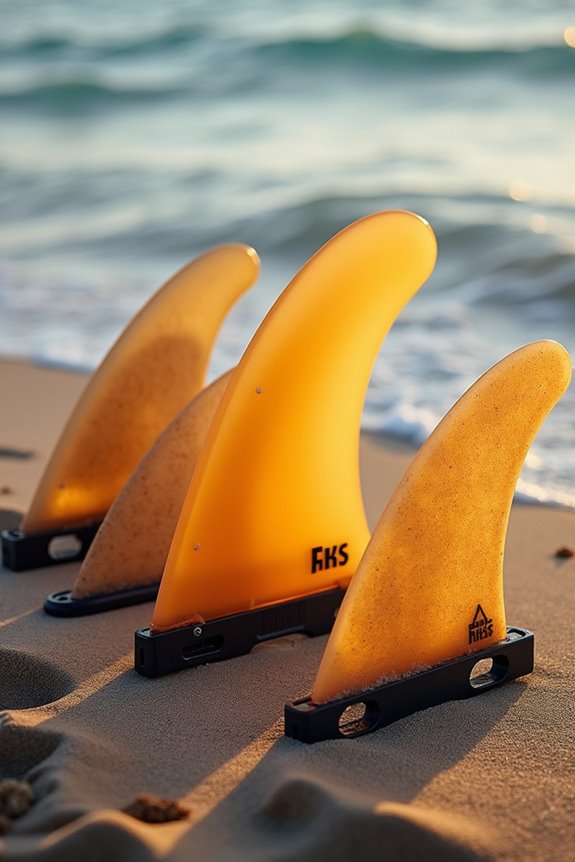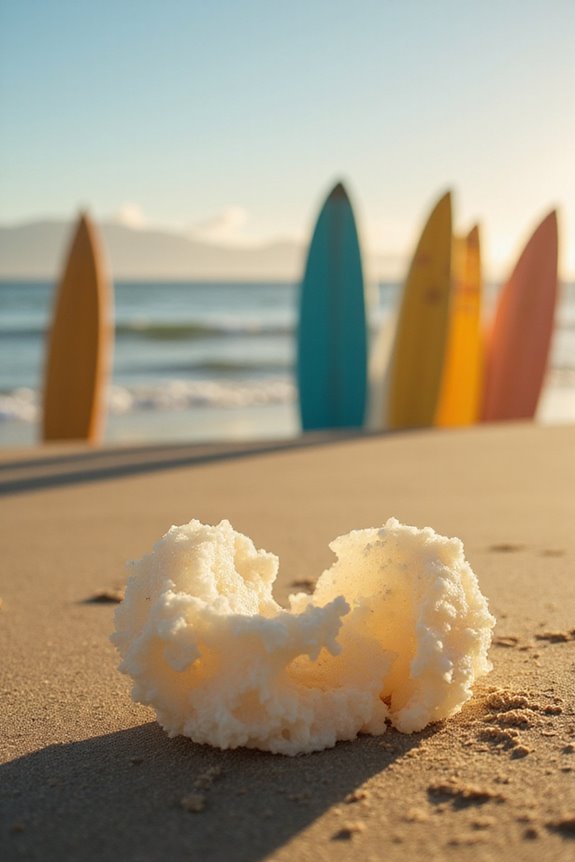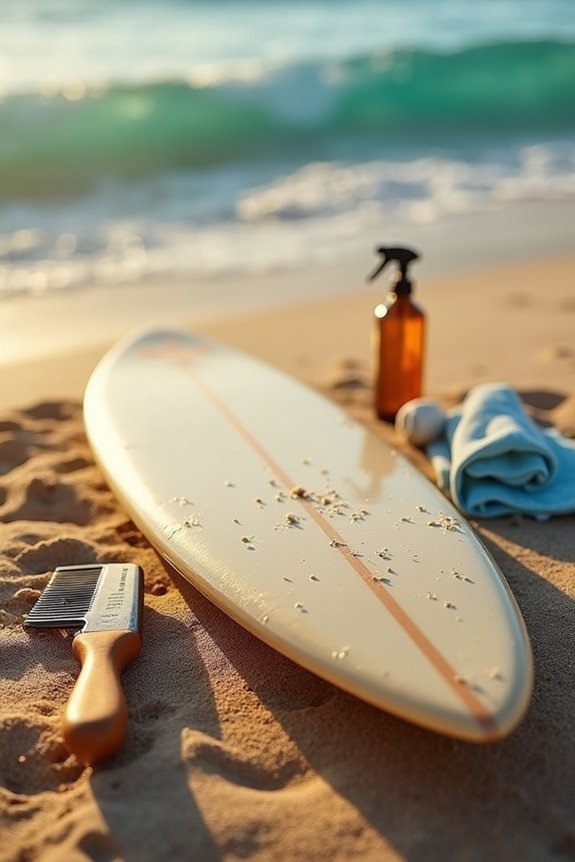To install fins properly, we start by cleaning the fin box thoroughly with isopropyl alcohol. Next, we position the fin about 5 3/4 inches from the tail, adjusting it for desired maneuverability or stability. We then insert the fin into the box, applying even pressure and tightening the screw until snug. Regular inspections and maintenance, like cleaning and checking for tightness, are essential. We can learn more about avoiding common installation mistakes and enhancing performance.
Key Takeaways
- Start by cleaning the fin box with isopropyl alcohol to ensure proper adhesion and performance.
- Position the fin approximately 5 3/4 inches from the tail for standard setups, adjusting for desired maneuverability or stability.
- Insert the fin into the fin box with the back tab first and apply even pressure to secure it fully.
- Tighten the fin screw using installation tools until snug, checking for movement to ensure it is secure.
- Regularly inspect and clean fins and fin boxes to maintain performance and prevent dirt buildup.
Preparing the Fin and Installation Area
When we prepare to install fins on our paddleboard or surfboard, it’s essential to start with a clean and organized workspace. First, we should gather our cleaning tools to remove any debris, old wax, sand, and dirt from the fin box area. Using isopropyl alcohol and a clean cloth, we can thoroughly clean the fin box to guarantee superior adhesion.
Next, we need to inspect the fin box for any cracks or damage that could affect installation. Once cleaned, we should verify that the fin box matches our fin type to avoid compatibility issues. It’s also important to consider the right material for the screws to ensure longevity and performance. Finally, turning the board upside down on a padded surface allows us to clear the installation area of any contaminants, guaranteeing a seamless process.
Positioning and Aligning the Fin
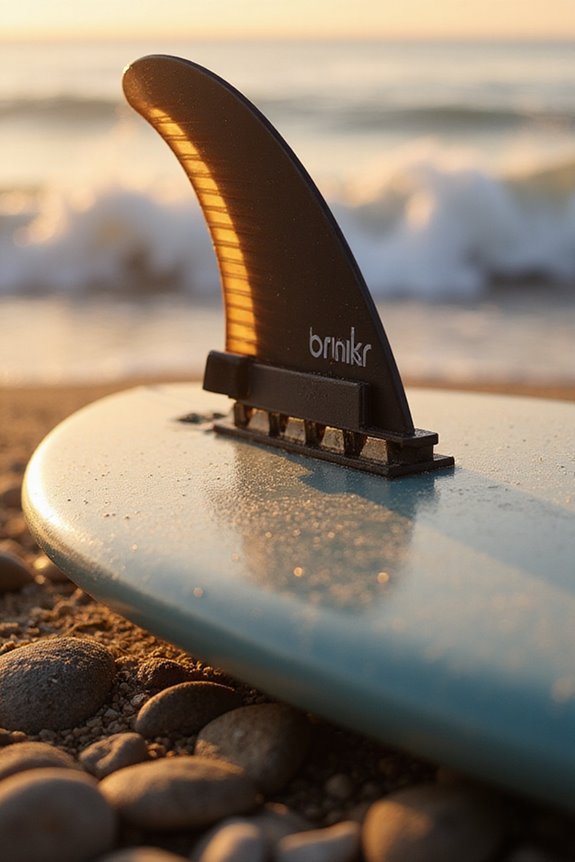
To guarantee peak performance, we must carefully position and align the fin on our board. The center fin should be about 5 3/4 inches from the tail for standard setups. We can adjust this position in small increments, typically between 1/8” and 1/4”, to tailor the fin characteristics to our style and the conditions we face. Moving the fin forward enhances maneuverability and control, which is ideal for tight waves. Conversely, shifting it backward promotes stability and straight-line tracking, particularly on longer paddles. Ensuring that the fin sits squarely in the fin box is essential, as proper alignment affects our board’s balance and overall performance impact in the water. Additionally, understanding the fin type compatibility is crucial for achieving optimal performance based on your surfboard’s design.
Securing the Fin
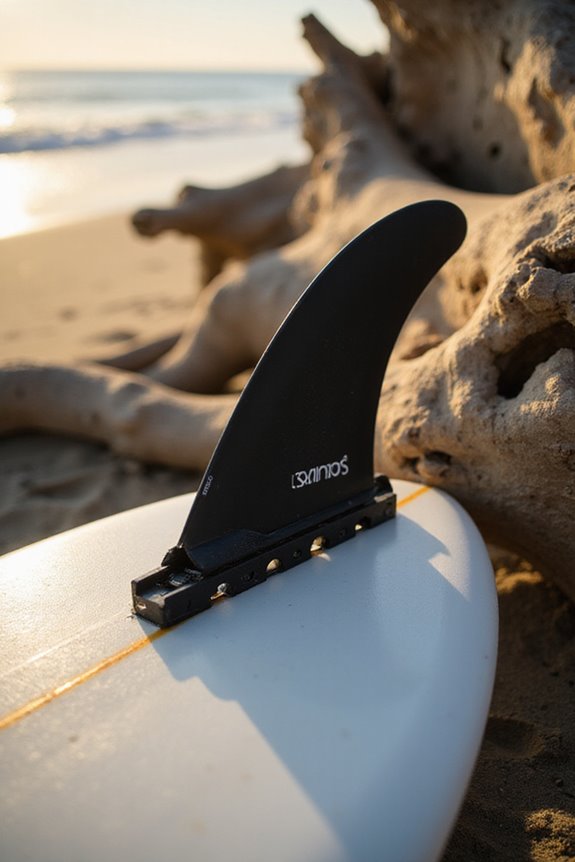
Securing the fin properly is the next step after positioning and aligning it on our board. We start by inserting the fin into the fin box, engaging the back tab first and sliding it gently into the groove. Once it fits snugly, we apply even pressure to guarantee it’s fully seated.
Next, we use our chosen installation tools, like a Futures fin key or screwdriver, to tighten the fin screw until it’s snug, avoiding overtightening. If our fin type allows, we can add a dowel and washer for added stability. After securing everything, we wiggle the fin gently to check for movement. Finally, we confirm that all components are tight and secure before heading out. Additionally, ensuring the fin’s alignment is crucial as it impacts the surfboard’s performance in the water.
Maintenance and Adjustment Tips
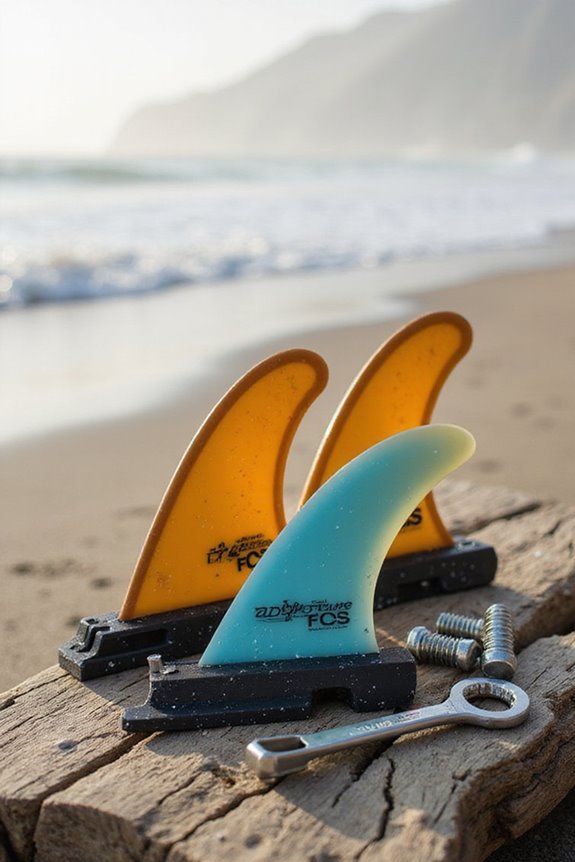
Maintaining and adjusting our fins is essential for ensuring peak performance and longevity. To achieve this, we should conduct routine inspections, checking for dirt, dust, and any damage. Cleaning fins with soft brushes or compressed air helps maintain their efficiency.
We also need to focus on lubrication techniques. Applying manufacturer-recommended lubricants to bearings and moving parts according to the maintenance schedule is vital. It’s important to standardize grease types to avoid compatibility issues.
Additionally, verifying the alignment of fins helps maintain airflow efficiency. We should document all inspections and adjustments to track maintenance efforts. By following these steps, we can enhance the performance and lifespan of our fins effectively. Regular checks are also recommended for tool condition and functionality, ensuring that our surf fin keys remain in optimal working order.
Avoiding Common Installation Mistakes
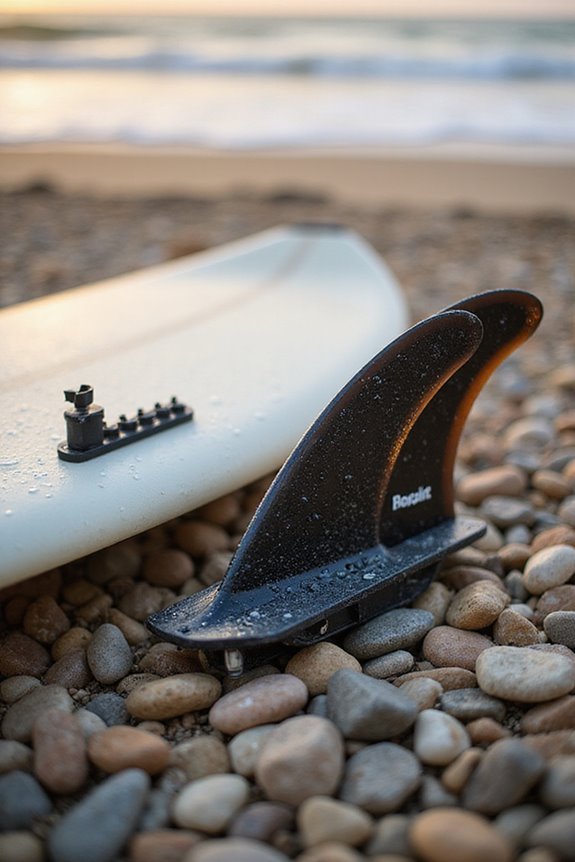
When we install fins, it’s essential to avoid common mistakes that can compromise their performance and stability. First, we must verify fin compatibility by matching the correct fins to their respective boxes. Before installation, we should clean the fin boxes thoroughly to remove any debris and inspect for damage. Using proper installation tools, we can carefully adjust screws without stripping them.
During placement, we insert fins at a slight angle and confirm they fit snugly against the back edge. We should never force fins in, as this can lead to damage. Additionally, it’s important to consider material quality and durability to ensure the fins maintain their performance over time. Finally, we must periodically check and maintain screw tightness to prevent loosening while in use, guaranteeing a smooth experience on the water.
Frequently Asked Questions
What Types of Fins Are Best for My Board?
Did you know that 80% of surfers prefer thruster setups? When choosing fins for our boards, we should consider fin material options and fin shape effects, as they greatly impact speed, control, and overall performance.
How Do I Know if My Fins Are Compatible?
To guarantee our fins are compatible, we should follow a fin compatibility checklist that considers fin mounting types. Checking size, design, and intended use will help us find the perfect fit for our needs.
What Should I Do if My Fin Won’t Fit?
Did you know that 30% of fin compatibility issues stem from debris? If our fin won’t fit, we should try cleaning the box and using fin adjustment techniques to guarantee a smooth installation.
How Often Should I Replace My Fins?
We should replace our fins every 1-2 years, or sooner if we notice fin wear indicators like cracks or loss of elasticity, as these can greatly impact fin performance and our overall swimming experience.
Can I Use Different Fin Sizes Together?
Sure, we can use different fin sizes together! Just remember fin size compatibility’s essential for mixed fin performance. By carefully selecting sizes, we can enhance stability and control while enjoying a tailored surfing experience.

